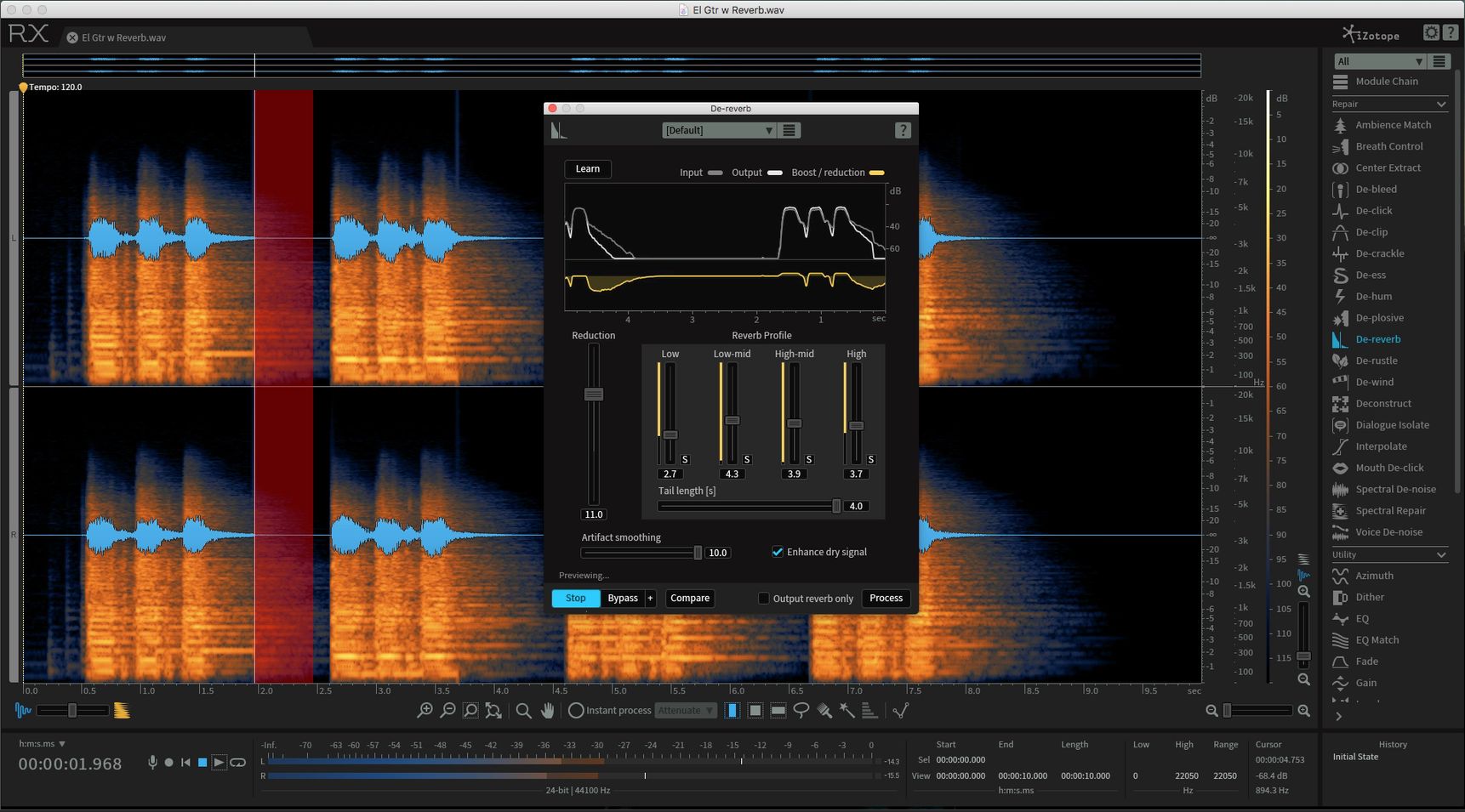
Standalone Workflow:
Izotope Rx 4 Dereverb Review

Aug 27, 2014 Sometimes you get a great acoustic guitar recording but the squeak noises are a bit too much for the song. Using iZotope RX you can remove or reduce the squeaks. Grab my Free eBook 'Bare. Another new plug-in for RX 4, RX Monitor, allows you to route audio from the standalone version of RX 4 through your DAW and its hardware, and out to your monitors. This is very useful for auditioning work that you’ve done in RX 4, especially for Pro Tools HD and HDX users, where RX 4 can’t access the hardware when Pro Tools is running.
Izotope Rx 4 Dereverb 4

Mazda Rx 4
- Open the audio file in the RX Audio Editor or send it via RX Connect (or open De-reverb as an offline plug-in in your DAW or NLE).
- Open the De-reverb module [Shift + 8].
- Select 5–10 seconds of audio that begins with a direct sound and contains segments of both the direct sound and the reverberant tail (the sample audio file used above would be a perfect example).
- Click Learn inside the De-reverb. This will automatically detect a multiband reverb profile for the audio, as well as the length of the reverb tail.
- Now select the entire section of audio you wish to process.
- Click Preview to listen to the audio with De-reverb applied. The master reduction amount will still be set to the default value of 10.0, but this setting is likely too aggressive for this example. Reduce this to around 2.0 or 3.0. Any value above 0 will reduce the reverb tail, but any value below 0 will enhance the reverberant signal. You can also tailor the reduction amounts at certain frequencies using the multiband sliders.
- If you hear the reverb tail getting louder after the initial reduction, adjust the Tail length to accommodate the longer decay time. For this example in St. Paul’s Cathedral, we’ll use a Tail length of 2.9 seconds.
- Check the box marked Output reverb to listen only to the components of the sound that are being removed. Continue to tailor the settings to remove the desired amount of reverb without affecting too much of the voice. For this example, we’ll reduce the High frequency attenuation to 2.5 and the general Reduction slider to 2.5 as well.
- Choosing Enhance Dry Signal can help boost the direct signal while continuing to reduce the reverberant tail.
- Click Process to render.
- Repeat the steps above two or three times, relearning the reverb profile each time and processing with moderate reduction settings to tackle complex reverbs.